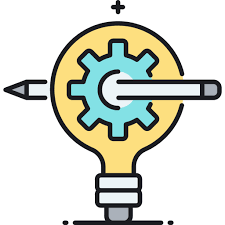See Article Title: e-Health, e-Med, and sometimes spelled e-med, also known as e-HEART, is the use of modern telecommunications and computer technologies, including computers, the Internet, cell phones, and portable hand-held devices, to support health care and medical improvement. This study was designed by the Health Education Institute (HEI) to help improve the health and social care system across the United States. In 2004, HEI received funding from the Agency for Healthcare Administration (Agency HCFA) to implement a nationwide electronic health record system. As part of the agreement, he would oversee the design and implementation of the new electronic health record system. In the meantime, volunteers from the study completed various tasks, which included completing surveys on topics such as their knowledge about e-diagnosis and e-cholesterol screening; their level of support for electronic medical records; and their experience using digital patient records.
After the initial phase of the study was complete, researchers began analyzing data from the health study. The analysis focused on factors that may affect the e-cholesterol screening results and other important outcomes. Several different types of e-cholesterol screening tools were analyzed to see what impact they had on different groups in the study. Different types of questionnaires were sent to different parts of the organization. They were asked if they wanted to take a particular health study tool, to track how often they used it, if they saw an improvement in their health when using it, if they were aware of any safety concerns, and if they would use a particular electronic health record software tool in the future.
After the initial phase of the study was complete, researchers performed a secondary analysis on data from the original enrollment. This time period also involved questions about patient characteristics, quality of care and experience, patient attitudes towards health, and e-cholesterol screening software. Another section of the health study sought to find out if patients changed their behaviors regarding e-cholesterol screening. This required tracking the progress of patients over time – looking at whether they used any electronic medical records at all during the first year, how many times in a year they went to a specialty clinic or physician for cholesterol screening, if they changed the tools they used or even how often they visited a doctor for cholesterol screening. All of this information was used to evaluate the impact of e-cholesterol screening tools on health.
After this secondary analysis was complete, researchers turned their focus back to the original health study. In this part of the study, the researchers considered whether there was any evidence that e-cholesterol screening increased the chances for heart attacks, strokes, or other types of health problems. They used a natural sample of people in the health study – men and women ages fifty to eighty-four who already had documented previous use of cholesterol-lowering medications. While they found no significant increase in the risk for any of the three diseases, they did notice a significant increase in the risk for depression.
It’s not that these people weren’t taking their medication; it’s that they used more electronic resources to calculate their recommended daily allowance of cholesterol-lowering medication than most people do now. More importantly, they didn’t have a way of measuring their e-cholesterol screening results. That makes it harder to draw conclusions about real-world health effects. But, we can draw conclusions about short-term effects based on what these people were exposed to, which is exactly what the researchers decided to do.
The problem with health risk modeling is that it only looks at the direct effect of exposure. In other words, it can’t tell you how your health will be affected by changes in consumption but not how your health will be affected by changes in consumption of other things, such as exercise. By examining how different variables affect you in different ways, you can draw more conclusions about real-world health risks. For example, many people believe that a large increase in cholesterol is bad for their health, but they don’t know that if they cut their consumption of eggs dramatically, cholesterol will still be a factor. They might also not realize that most people who are eating eggs are actually suffering from a low-disease risk group.
Health risk modeling is all about considering the big picture, rather than the small ones. If you’re using e-cholesterol screening to determine your risk for heart disease, for example, you should examine what you are being exposed to in the ways that are most important to your health. E-cholesterol doesn’t make you sick like an elevated level of cholesterol would, but it does contribute to your risk for cancer and other serious health problems. It can have an indirect effect on your health, too, because it can lead to higher rates of depression and anxiety. You have to consider all of the factors that can affect you, not just the immediate ones.

